Study the below given periodic table in which four elements are indicated by alphabets: A, B, C and D.
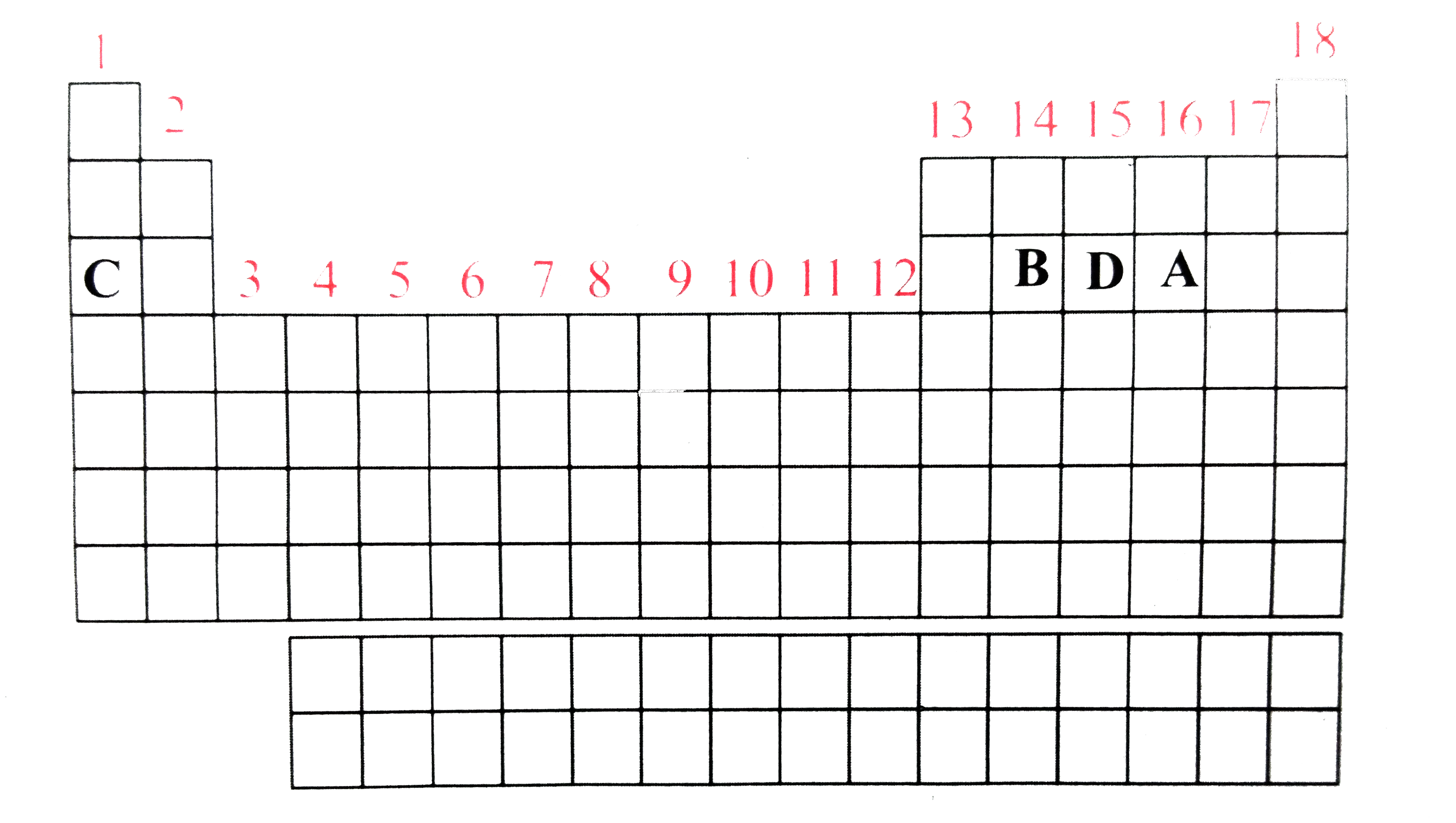
Among 'C' and 'D' which element has larger atomic radius?
Element 'C' has larger atomic radius than element 'D'.
Topper's Solved these Questions
- PERIODIC CLASSIFICATION OF ELEMENTS BOOK - TARGET PUBLICATIONCHAPTER - PERIODIC CLASSIFICATION OF ELEMENTS EXERCISE - Questions based on paragraph
15 Videos
- PERIODIC CLASSIFICATION OF ELEMENTS BOOK - TARGET PUBLICATIONCHAPTER - PERIODIC CLASSIFICATION OF ELEMENTS EXERCISE - Apply your knowledge
49 Videos
- PERIODIC CLASSIFICATION OF ELEMENTS BOOK - TARGET PUBLICATIONCHAPTER - PERIODIC CLASSIFICATION OF ELEMENTS EXERCISE - Complete the given chart/table
2 Videos
- METALLURGYBOOK - TARGET PUBLICATIONCHAPTER - METALLURGYEXERCISE - CHAPTER ASSESSMENT
12 Videos
Similar Questions
Study the below given periodic table in which four elements are indicated by alphabets: A, B, C and D.
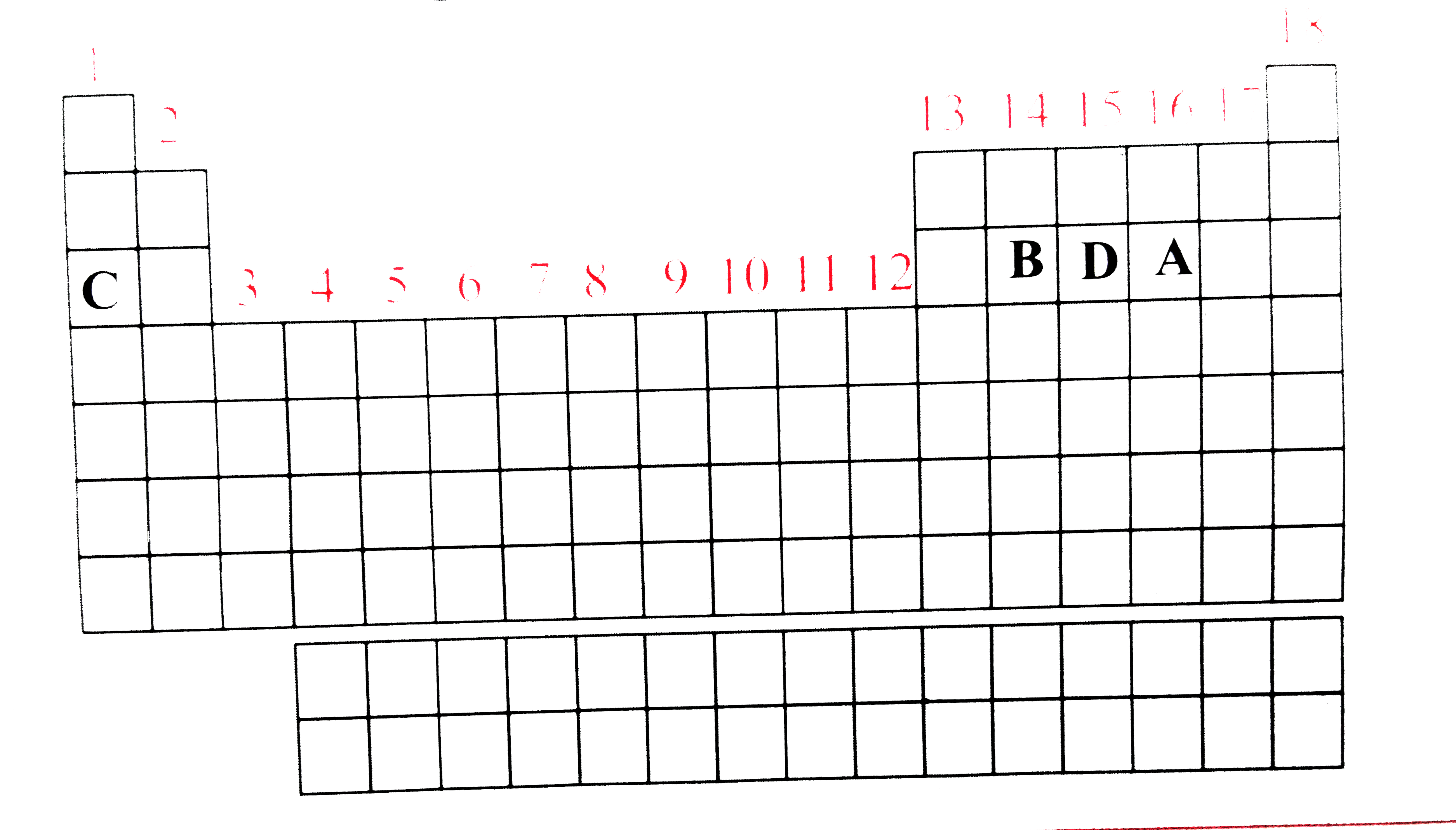
Which element is a metalloid? Name this element.
View SolutionStudy the below given periodic table in which four elements are indicated by alphabets: A, B, C and D.
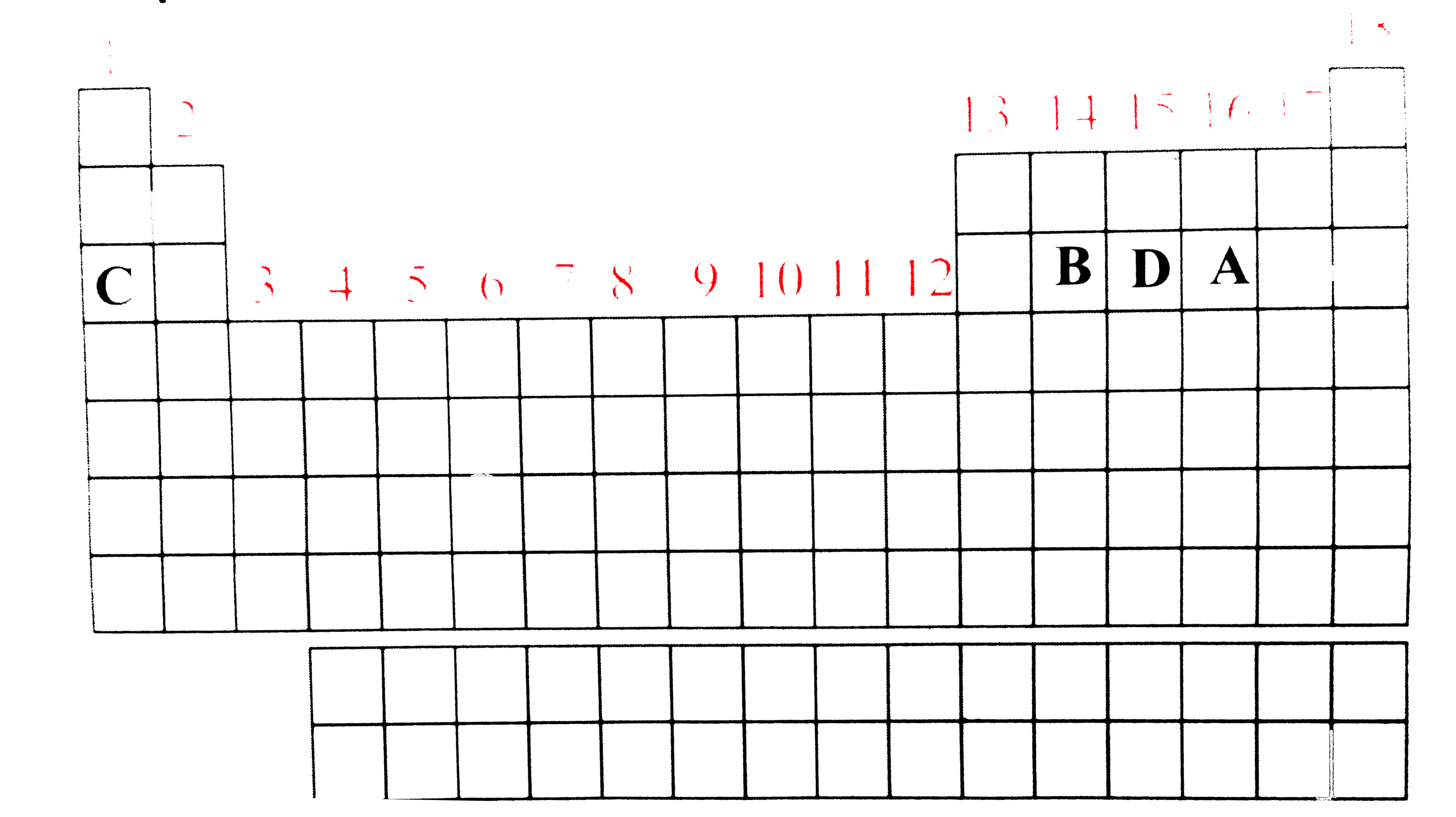
Identify element 'A' and write its electronic configuration.
View SolutionAmong the elements B, Al , C and Si
which has the largest atomic radius?
View SolutionThe following table shows the position of five elements A, B, C, D and E in the modern periodic table.
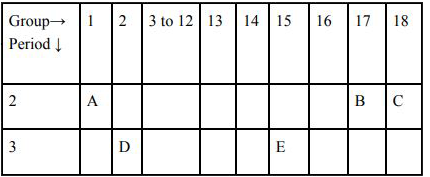
Answer the following giving reasons:
(i) Which element is a metal with valency two?
(ii) Which element is least reactive?
(iii) Out of D and E which element has a smaller atomic radius?
View SolutionIn the table given below, six elements are shown with their atomic numbers given in parenthesis.

Among elements A, B, C, which one has largest atomic size.
View SolutionThe electronic configurations of the elements A, B, C and D are given below. Which element has the highest metallic character?
View SolutionThe atomic radii of the elements of second period are given below:

(a) Arrange these elements in the decreasing order of their atomic radii (Keeping the element with the largest atomic radius first).
(b) Are the elements now arranged in the pattern of a period in the periodic table?
(c) Which elements have the largest and the smallest atoms?
(d) From this data, infer how the atomic size (or atomic radius) of the elements changes as you go from left to right in a period?
View SolutionThe positions of four elements A, B, C and D in the modern periodic table are shown below. Which element is most likely to form an acidic oxide?
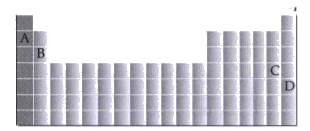
View SolutionGiven below are some elements of the Modern Periodic Table. Atomic number of the element is given in the parentheses:
A(4), B(9), C(14), D(19), E(20)
(a) Select the element that has one electron in the outermost shell. Also write the electronic configuration of this element.
(b) Which two elements amongst these belong to the same group? Give reason for your answer.
(c) Which two elements amongst these belong to the same period? Which one of the two has bigger atomic radius?
View SolutionThe following table shows the position of six elements A, B, C, D, E and F in the Periodic Table.

Using the above table answer the following questions: (a) Which element will form only covalent compounds? (b) Which element is a metal with valency 2? (c) Which element is a non-metal with valency 3? (d) Write a common name for the family of elements C and F. (e) Out of D and E, which one has a bigger atomic radius and why?
View Solution
